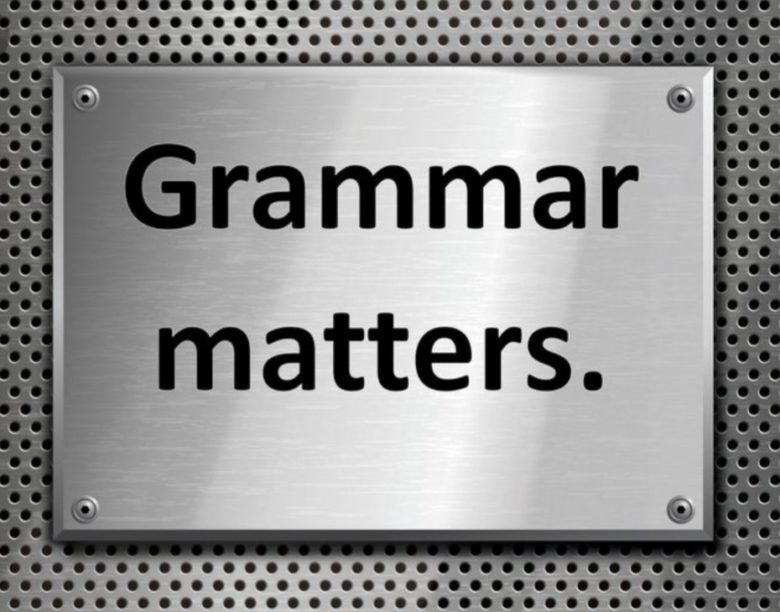The English language can be a bit intimidating to many, but if you are here for a few, basic English grammar must, then you have come to the correct place. I have the ultimate guide that I am certain will get you going on your writing journey.
What Is The Meaning Of Basic English Grammar?
When it comes to English grammar, there are hundreds or even thousands of rules that define its grammar structure. However, if we are to categorize it into basic English grammar then we can limit the rules to subject-verb agreement, noun, pronoun, adjectives, conjunctions, and prepositions, which we will dive deeper in, in a future blog. The number one aspect of learning English requires a person to have a firm grasp over basic English grammar rules. Here are some of the most important ones:
Sentence Structure
Step number one of learning English requires you to focus on sentence structure. The skill of building an appropriate sentence structure is a basic English grammar rule, yet it is extremely essential. There are four types of sentence structures, simple, compound, complex, and compound-complex, and once you have each type down packed and completely understood, you will be on your way to greatness so let’s go ahead and break these down and look at a few examples of each.
- Simple Sentence: A simple sentence is pretty easy to understand. This type of sentence structure will have a subject and a verb; otherwise known as an independent clause and will convey a complete thought. Let’s take a look at a few examples:
- I drink milk.
- Tim hates cookies.
- Samantha did not drive to the store.
- Compound Sentence: Unlike a simple sentence, a compound sentence structure contains two or more independent clauses that are combined, or joined together by a semicolon or conjunction, each forming a complete sentence. There are seven conjunctions in the English language: for, and, nor, but, or, yet, so, which we will touch more on later. The best way that I and a lot of people remember these very useful conjunctions is with the acronym “FANBOYS”. Let’s take a look at a few examples of compound sentences:
- I hate milk, but Susan likes milk.
- The game went into overtime; we arrived late.
- The dog went to sleep, yet the cat ran through the house all day.
- Complex Sentences: Complex sentences can tend to get a bit complex no pun intended, nonetheless; they are very easy to understand, especially if you have gotten this far. A complex sentence structure is an independent clause as described in a simple sentence, along with a dependent clause, which is a clause that starts with a subordinating conjunction. Let’s stop right here for a minute. What are subordinating conjunctions? Let’s look at the most common ones before we move on.
Subordinating Conjunctions
- Although
- After
- Before
- Because
- As
- That
- Than
- How
- If
- Once
- Since
- Though
- Till
- Until
- Whether
- When
- While
- Where
Along with the dependent clause possibly starting with any of the above subordinating conjunctions, a dependent clause may also start with a relative pronoun, which can be described as a pronoun that connects a phrase or a clause to a noun or pronoun and is always placed after that noun or pronoun in which they describe or modify. Examples of relative pronouns are.
Relative Pronouns
- That
- Who
- Which
- Whose
- Whom
When and where are relative adverbs that can also be used as relative pronouns. Moving on, complex sentences also contain a subject and a verb, but unlike a simple sentence structure , a complex sentence structure does not convey a complete thought. Let’s look at a few examples of complex sentences:
- We missed the train because we looked at the wrong schedule. (Because is a subordinating conjunction that starts the dependent clause)
- My cat meows when she is hungry. (When is a subordinating conjunction that starts the dependent clause)
- The cigarette fell on the floor which caused the fire. (Which is a relative pronoun that starts the dependent clause)
- Compound-Complex Sentences: Contains two or more simple sentences or independent clauses and at least one dependent clause, which can also be called a subordinate clause. As you can see, this type of sentence structure requires a bit more attention to constructing and may require you to review the definitions of the previous sentence structures to make sure you understand it fully. Let’s take a look at a few basic examples of this type of sentence structure:
- They took off in a rush to catch the bus but they missed it anyway.
- Betty came late because she was studying, so she missed the show.
- Although Tom is still in love with his ex, he married his baby’s mother and he regrets it everyday.
Sentence structures also have the following basic rules so let’s take a look:
Subject-Verb Agreement
The subject-verb agreement follows the basic rule of the subject ‘agreeing’ with the verb. For a better understanding, we can categorize the rule in further two rules.
- A singular subject always uses a singular verb.
- For example, a singular subject such as (Alan, He, Pen) will take on a singular verb (goes, is, works)
- The next rule works on the principles of plurality, a plural subject takes on a plural verb
- For example, the cats chase the mouse or the boys talked to me. Here, cats & boys are plural
It is important to understand a few rules that are attached to the entire concept of subject-verb agreement. Firstly, a sentence needs to showcase that an entire thought is being represented. Secondly, a singular needs to express a singular predicate.
English Speech
Now we focus towards an aspect that is important and is extremely helpful in accurate construction of English sentences. This comes as a secondary rule when you’re able to reach a consensus on the rule of subject-verb agreement. The basic parts of English speech include the following notions which we will dive deeper into in a future article on the 8 parts of speech:
Noun: English 101, highlights the fact that a noun is a name of a place, animal, thing, idea or expression. Nouns can be used in a wide range of forms, singular, plural or possessive.
Pronoun: A pronoun is a word that can take the place of a noun. Pronouns can usually be classified into words such as ‘I, ‘they’ and ‘you’.
Verbs: Verbs when used in English speech show the fact that a certain action is being put into place. A verb can be seen as a word that connects an entire sentence due to its connection with the subject.
Adjective: Adjectives showcase a certain quality or characteristics in a sentence. For example, beautiful or ugly. Basically, an adjective helps in changing or modifying the meaning attached to a pronoun.
Adverb: Much like how adjectives modify a pronoun. Adverbs similarly, modify a verb which means that certain elements like when, why or how a certain action took place.
Conjunctions: Conjunctions such as “yet”, “or” and “but” are used to connect two words or phrases.
Interjections: Interjections are used to show emotions such as Alas! Or Hurray!
Article: Articles are words which are extremely helpful in structuring a sentence which is used to define a noun. “A”, “an”, and “the” represents the three articles.The being a definite article and a and an being indefinite articles.
Subject And Predicate
Every sentence, or should I say, every complete sentence will contain a subject, which is the focal point of that sentence that can be either a person, place, thing or even an idea. Each complete sentence will also contain a predicate, which essentially describes, or modifies what the subject or object is doing or the action in which they are performing and also must agree with that object or subject.
The predicate can also let the reader know something about the subject, but do not mistake the predicate for the verb, which also shows action. The difference is, a verb can stand alone in a sentence as predicates, whereas; a predicate will forever need a verb to show the action of the subject. The predicate essentially is the verb and its object(s) in the sentence that again, modifies the subject. Let’s take a look at a few examples:
- Jane likes to eat on the patio.
The first thing that you want to figure out is the subject and predicate of the sentence. The subject is obvious, Jane; now what you want to do is ask yourself, what does Jane do. According to the sentence, likes to eat on the patio is the predicate. As you can see, the predicate contains the verb “likes” and also includes all the other words that modify or describes what Jane likes to do.
- The fog was thick, so the driver drove slowly down the dark street.
In this sentence, the first thing you want to do is recognize who or what the subject is. What is the action in this sentence? Drove is the action correct? So drove must be the verb describing who? The driver correct? So the subject of this sentence is the driver so now ask yourself what does the driver do. Drove slowly down the dark street.
This would be the predicate of this sentence. For some, this sentence may have been a little tricky finding the subject and predicate, fog could have been mistaken as the subject, after all; it is a noun and was is a linking verb, but the mission is to find the subject and predicate and in this sentence.
Fog is not the focal point and you can’t ask the question of what does fog do. Thick does not describe what the fog does, thick describes what the fog is, therefore; this rules out the phrase being a subject and predicate.
- She took my place in line.
In this sentence, she is the subject and took my place in line is the predicate. As we can see from the above examples, finding the subject and predicate of a sentence is not a hard as long as you ask yourself a few simple questions. For a recap, please see the below video.


